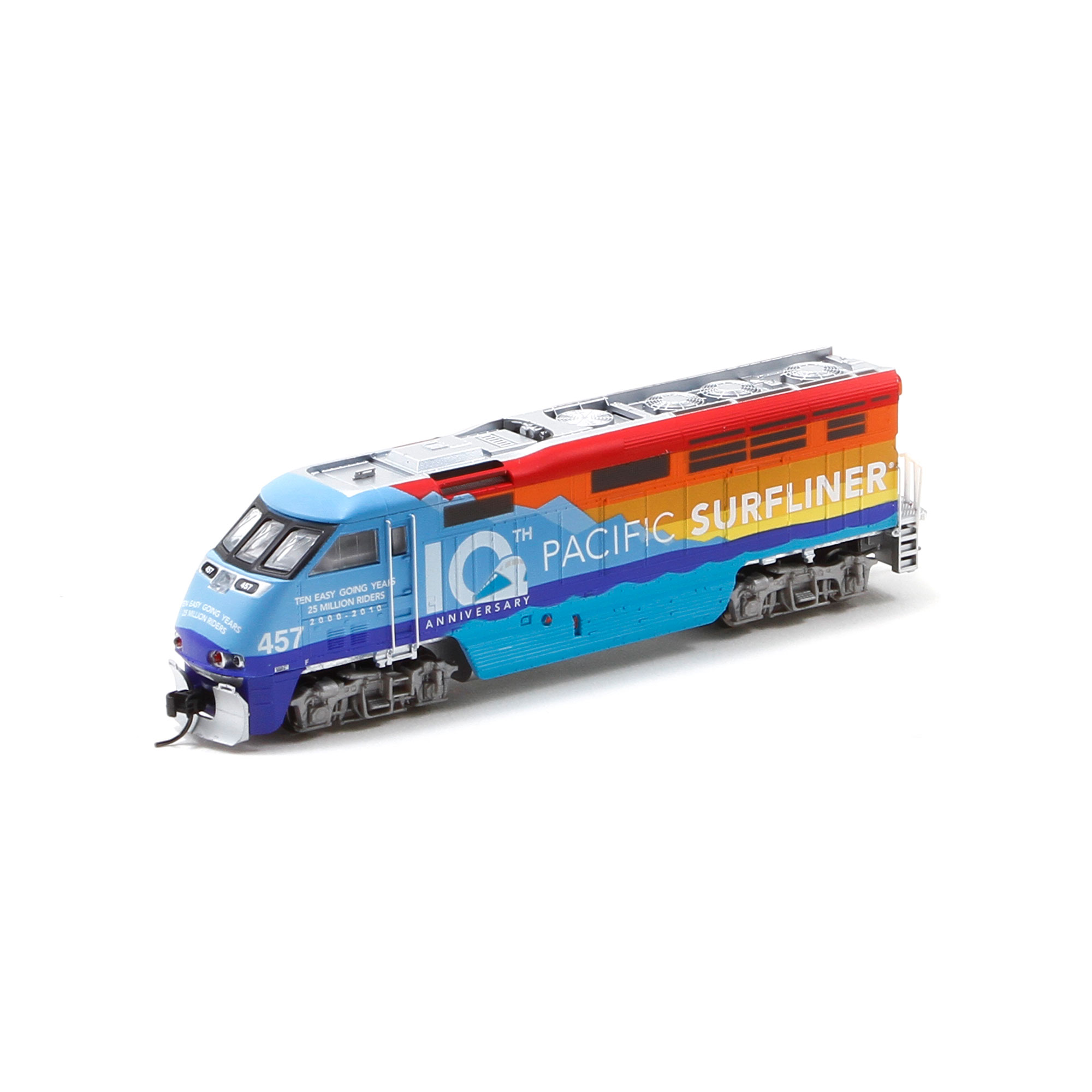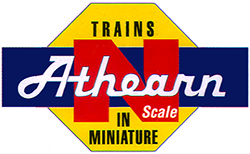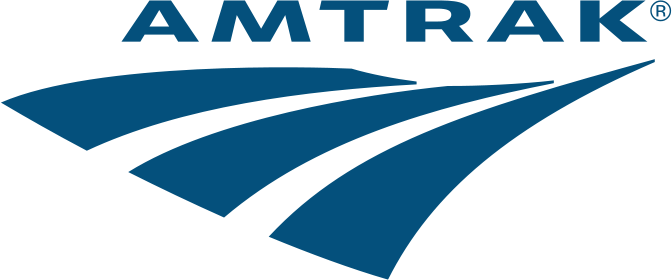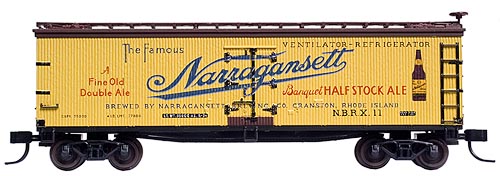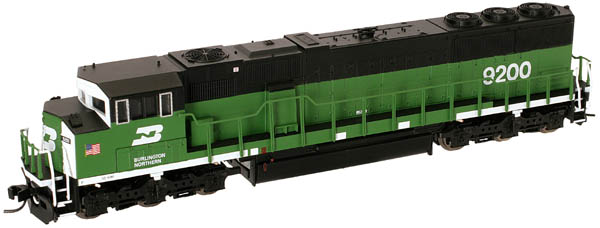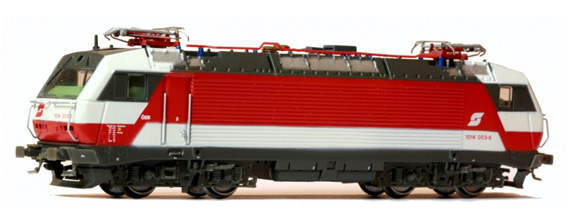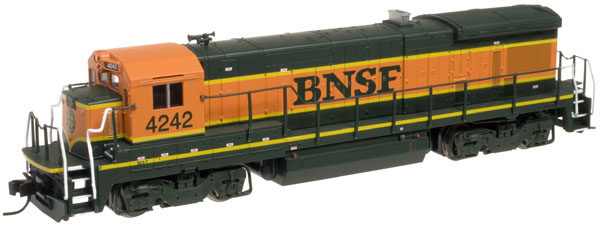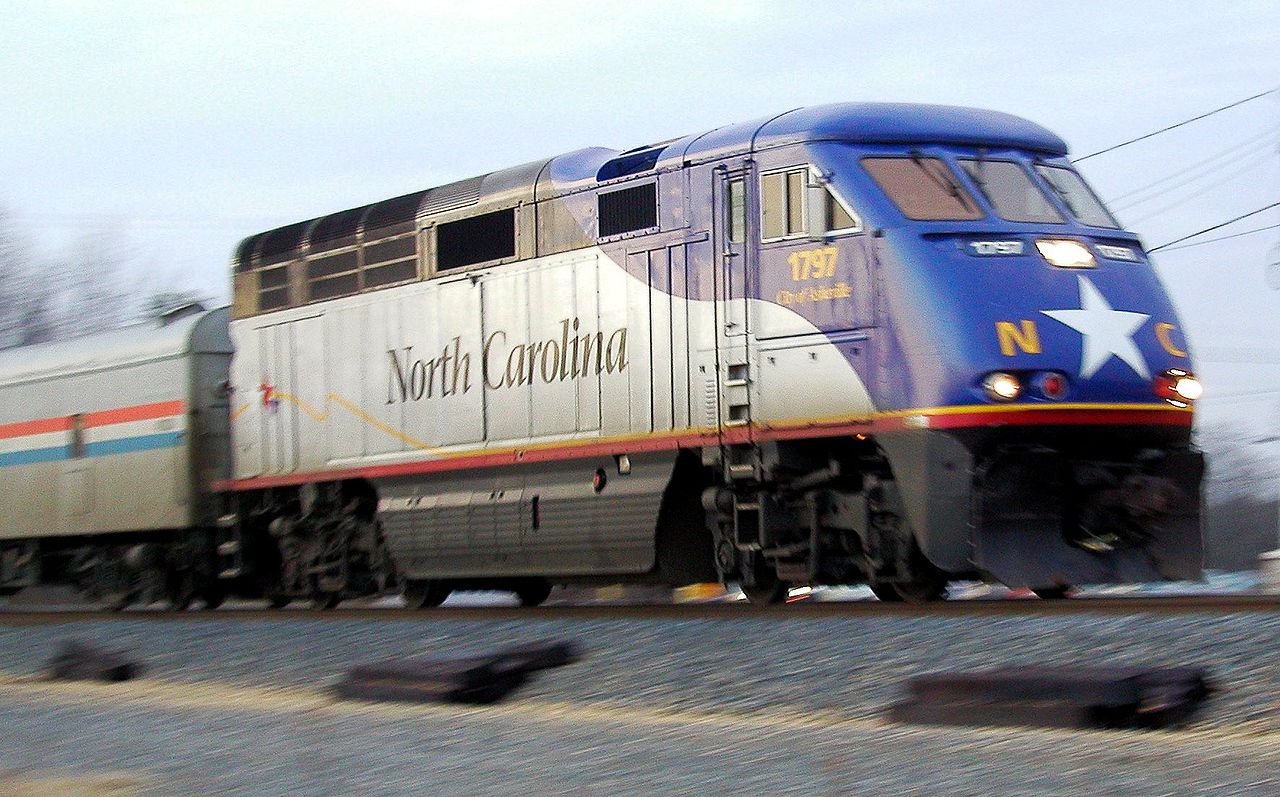Specific Item Information: The Surfliner is Amtrak's third busiest route, after the Northeast Corridor regional and Acela lines. It serves Southern California between San Diego in the South up to San Luis Obispo at its northernmost stop. This service was launched in 2010.
Model Information: Athearn introduced this model in 2002. This early version was manufactured by Ajin in Korea. In 2011, Athearn commissioned a new model to be made in China to replace the Korean tooling. The two model use very similar shells and it is possible Athearn was able to move the tooling from Korea to China but it is also possible it is a new shell copied from one of the original models. That being said, the two mechanisms are completely different.
The early version does not support DCC and uses a 3-pole skew-wound motor with dual flywheels. It is very difficult to disassemble this model, so this may just be an urban legend. There might be a hamster in there for all we know. The mechanism runs pretty smoothly, but there is no support for a drop-in decoder and these can be considered DCC-Friendly at best. The wheels are chemically-blackened low profile and thus run fine on Code-55 track.
The Chinese version supports a drop-in decoder, and is made like a typical post-2000 locomotive with a split-frame chassis. The shells are not completely interchangeable, so expect to do some modifications before putting a Korean shell on a Chinese mechanism.
The early version does not support DCC and uses a 3-pole skew-wound motor with dual flywheels. It is very difficult to disassemble this model, so this may just be an urban legend. There might be a hamster in there for all we know. The mechanism runs pretty smoothly, but there is no support for a drop-in decoder and these can be considered DCC-Friendly at best. The wheels are chemically-blackened low profile and thus run fine on Code-55 track.
The Chinese version supports a drop-in decoder, and is made like a typical post-2000 locomotive with a split-frame chassis. The shells are not completely interchangeable, so expect to do some modifications before putting a Korean shell on a Chinese mechanism.
DCC Information: Some models come with DCC and sound. For the non-DCC models, notes can be found here at Brad Myers'
excellent blog.
Prototype History: The EMD F59PHI is a common diesel-electric locomotive on passenger trains in North America, built originally by General Motors Electro-Motive Division (EMD), now built by the successor company, Electro-Motive Diesel, which is owned by Progress Rail Services, itself a division of Caterpillar.
First built in 1994, the locomotive is a 3,200 hp (2.4 MW) B-B diesel-electric locomotive intended for service on North American mainlines. This locomotive is equipped with a turbocharged EMD 12-710G3C-EC, a 12-cylinder, 2 stroke diesel engine (prime mover). The main (traction) alternator converts mechanical energy from the prime mover into electrical energy that is distributed through a high voltage cabinet to direct current traction motors. Each of the four traction motors is directly geared to a pair of driving wheels. The gear ratio of the traction motors (model D87BTR) to wheel axle determines the maximum operating speed of the locomotive; a standard F59PHI has a gear ratio of 56:21 which provides a top speed of 110 miles per hour (180 km/h).
The F59PHI has a fully enclosed carbody which provides protected walkways for easy access to the engine room and trailing units. This arrangement allows routine maintenance while the locomotive is in service. The noteworthy aspect of this locomotive's exterior is the use of composites to present a streamlined appearance.
To supply electrical power for passenger service, the F59PHI is equipped with a secondary electrical generator referred to as the Head End Power (HEP) unit. The head-end generator generates AC power at 480 V, 60 Hz AC, and can be rated between 500 and 750 kW (670 and 1,010 hp) to provide power to the passenger carriages for lighting, electric heating, and air conditioning. The head-end generator is powered by a second diesel engine dedicated to it. With this arrangement, the prime mover is not burdened by head-end power generation and consequently is used solely for supplying tractive effort.
From Wikipedia
First built in 1994, the locomotive is a 3,200 hp (2.4 MW) B-B diesel-electric locomotive intended for service on North American mainlines. This locomotive is equipped with a turbocharged EMD 12-710G3C-EC, a 12-cylinder, 2 stroke diesel engine (prime mover). The main (traction) alternator converts mechanical energy from the prime mover into electrical energy that is distributed through a high voltage cabinet to direct current traction motors. Each of the four traction motors is directly geared to a pair of driving wheels. The gear ratio of the traction motors (model D87BTR) to wheel axle determines the maximum operating speed of the locomotive; a standard F59PHI has a gear ratio of 56:21 which provides a top speed of 110 miles per hour (180 km/h).
The F59PHI has a fully enclosed carbody which provides protected walkways for easy access to the engine room and trailing units. This arrangement allows routine maintenance while the locomotive is in service. The noteworthy aspect of this locomotive's exterior is the use of composites to present a streamlined appearance.
To supply electrical power for passenger service, the F59PHI is equipped with a secondary electrical generator referred to as the Head End Power (HEP) unit. The head-end generator generates AC power at 480 V, 60 Hz AC, and can be rated between 500 and 750 kW (670 and 1,010 hp) to provide power to the passenger carriages for lighting, electric heating, and air conditioning. The head-end generator is powered by a second diesel engine dedicated to it. With this arrangement, the prime mover is not burdened by head-end power generation and consequently is used solely for supplying tractive effort.
From Wikipedia
Road Name History: The National Railroad Passenger Corporation, doing business as Amtrak, is a passenger railroad service that provides medium- and long-distance intercity service in the contiguous United States. Founded in 1971 through the government-sponsored consolidation of most of the remaining U.S. passenger rail companies, it is partially government-funded yet operated and managed as a for-profit corporation.
Amtrak operates more than 300 trains each day on 21,300 miles (34,000 km) of track with select segments having civil operating speeds of 150 mph (240 km/h) and connecting more than 500 destinations in 46 states in addition to three Canadian provinces. In fiscal year 2015, Amtrak served 30.8 million passengers and had $2.185 billion in revenue, while employing more than 20,000 people. Nearly two-thirds of passengers come from the 10 largest metropolitan areas; 83% of passengers travel on routes shorter than 400 miles. Its headquarters is at Union Station in Washington, D.C.
The name "Amtrak" is a portmanteau of the words "America" and "trak", the latter itself a sensational spelling of "track".
Read more on Wikipedia.
Amtrak operates more than 300 trains each day on 21,300 miles (34,000 km) of track with select segments having civil operating speeds of 150 mph (240 km/h) and connecting more than 500 destinations in 46 states in addition to three Canadian provinces. In fiscal year 2015, Amtrak served 30.8 million passengers and had $2.185 billion in revenue, while employing more than 20,000 people. Nearly two-thirds of passengers come from the 10 largest metropolitan areas; 83% of passengers travel on routes shorter than 400 miles. Its headquarters is at Union Station in Washington, D.C.
The name "Amtrak" is a portmanteau of the words "America" and "trak", the latter itself a sensational spelling of "track".
Read more on Wikipedia.
Brand/Importer Information: Athearn's history began in 1938, when its founder-to-be, Irvin Athearn, started an elaborate O scale layout in his mother's house. After placing an ad selling the layout, and receiving much response to it, Irv decided that selling model railroads would be a good living. He sold train products out of his mother's house through most of the 1940s. After becoming a full-time retailer in 1946, Irv opened a separate facility in Hawthorne, California in 1948, and that same year he branched into HO scale models for the first time.
Athearn acquired the Globe Models product line and improved upon it, introducing a comprehensive array of locomotive, passenger and freight car models. Improvements included all-wheel drive and electrical contact. One innovation was the "Hi-Fi" drive mechanism, employing small rubber bands to transfer motion from the motor spindle to the axles. Another was the double-ended ring magnet motor, which permitted easy connection to all-wheel-drive assemblies. Athearn was also able to incorporate flywheels into double-ended drives.
The company produced a model of the Boston & Maine P4 class Pacific steam locomotive which incorporated a cast zinc alloy base and thermoplastic resin superstructure. It had a worm drive and all power pickup was through the bipolar trucks that carried the tender. This item was discontinued after the Wilson motor was no longer available, and was not redesigned for a more technologically advanced motor.
Athearn's car fleet included shorter-than-scale interpretations of passenger cars of Southern Pacific and Atchison, Topeka & Santa Fe Railroad prototypes. The company also offered a variety of scale-length freight cars with sprung and equalized trucks. The cars could be obtained in simple kit form, or ready-to-run in windowed display boxes. The comprehensive scope of the product line contributed to the popularity of HO as a model railroad scale, due to the ready availability of items and their low cost.
Irv Athearn died in 1991. New owners took control in 1994, but continued to follow Athearn's commitment to high-quality products at reasonable prices. Athearn was bought in 2004 by Horizon Hobby. Athearn was then moved from its facility in Compton to a new facility in Carson, California. In mid-2009, all remaining US production was moved to China and warehousing moved to parent Horizon Hobby. Sales and product development was relocated to a smaller facility in Long Beach, California.
Read more on Wikipedia and Athearn website.
Athearn acquired the Globe Models product line and improved upon it, introducing a comprehensive array of locomotive, passenger and freight car models. Improvements included all-wheel drive and electrical contact. One innovation was the "Hi-Fi" drive mechanism, employing small rubber bands to transfer motion from the motor spindle to the axles. Another was the double-ended ring magnet motor, which permitted easy connection to all-wheel-drive assemblies. Athearn was also able to incorporate flywheels into double-ended drives.
The company produced a model of the Boston & Maine P4 class Pacific steam locomotive which incorporated a cast zinc alloy base and thermoplastic resin superstructure. It had a worm drive and all power pickup was through the bipolar trucks that carried the tender. This item was discontinued after the Wilson motor was no longer available, and was not redesigned for a more technologically advanced motor.
Athearn's car fleet included shorter-than-scale interpretations of passenger cars of Southern Pacific and Atchison, Topeka & Santa Fe Railroad prototypes. The company also offered a variety of scale-length freight cars with sprung and equalized trucks. The cars could be obtained in simple kit form, or ready-to-run in windowed display boxes. The comprehensive scope of the product line contributed to the popularity of HO as a model railroad scale, due to the ready availability of items and their low cost.
Irv Athearn died in 1991. New owners took control in 1994, but continued to follow Athearn's commitment to high-quality products at reasonable prices. Athearn was bought in 2004 by Horizon Hobby. Athearn was then moved from its facility in Compton to a new facility in Carson, California. In mid-2009, all remaining US production was moved to China and warehousing moved to parent Horizon Hobby. Sales and product development was relocated to a smaller facility in Long Beach, California.
Read more on Wikipedia and Athearn website.
Item created by: Lethe on 2016-08-28 10:20:12. Last edited by Powderman on 2020-03-02 16:34:58
If you see errors or missing data in this entry, please feel free to log in and edit it. Anyone with a Gmail account can log in instantly.
If you see errors or missing data in this entry, please feel free to log in and edit it. Anyone with a Gmail account can log in instantly.


